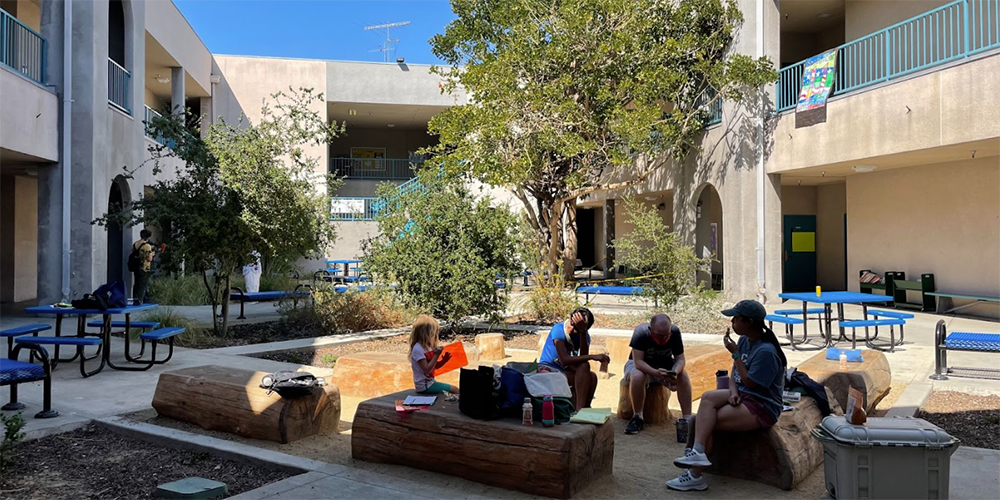California’s K-12 Education System Is Under-Prepared for Rising Temperatures
Policy brief outlines five action areas to protect students with heat-resilient schools
Photo by V. Kelly Turner / Luskin Center for Innovation
Heat makes it harder for students to learn and for teachers to teach. Previous research supported by the UCLA Luskin Center for Innovation quantified how these effects exacerbate educational and racial inequalities.
Now, a new policy brief published by the Luskin Center for Innovation proposes five actions for California policymakers to prepare the state’s K-12 public school system for rising temperatures under climate change.
The agenda proposed by UCLA researchers seeks to achieve goals outlined in California’s 2022 Extreme Heat Action Plan. The plan recommends cooling schools in heat-vulnerable communities as a near-term focus.
Students can experience extreme heat both in and outside the classroom. The UCLA brief calls for better data to inform state action for heat management across classrooms and schoolyards alike. For instance, the authors highlight that there is currently no statewide data for tracking which schools do and do not have air conditioning, appropriately shaded schoolyards, and other cooling interventions.
“We have recorded surface temperatures of 140 degrees Fahrenheit and above on school play equipment, but the full extent of the problem has yet to be documented,” said Kelly Turner, associate director of the UCLA Luskin Center for Innovation.
“The nexus of schools and heat is an understudied and underfunded area deserving of more attention,” added Turner, who is also an associate professor of urban planning at the UCLA Luskin School of Public Affairs.
The policy brief focuses on five areas of action to advance heat resilience at schools and highlights where more research is needed.
- Track how schools in California experience extreme heat and the status of cooling interventions to understand evolving needs for heat management
- Establish a statewide indoor temperature limit for schools based on scientific assessment of children’s risk and effects on learning
- Mitigate heat exposure in schoolyards through evidence-based engineered and nature-based solutions
- Manage heat exposure in schools — indoors and outdoors — through informed behavioral interventions
- Identify funding gaps and inconsistencies that should be addressed for effective, targeted heat mitigation
This is the latest in a series of policy briefs to help guide state policymakers in advancing equitable and effective strategies to protect Californians from extreme heat. The first policy brief recommends an overall approach to heat management in California and the second outlines actions to protect Californians where we live.
The Resources Legacy Fund funded the three policy briefs in the series. The briefs drew from research supported by the California Strategic Growth Council’s Climate Change Research Program.








